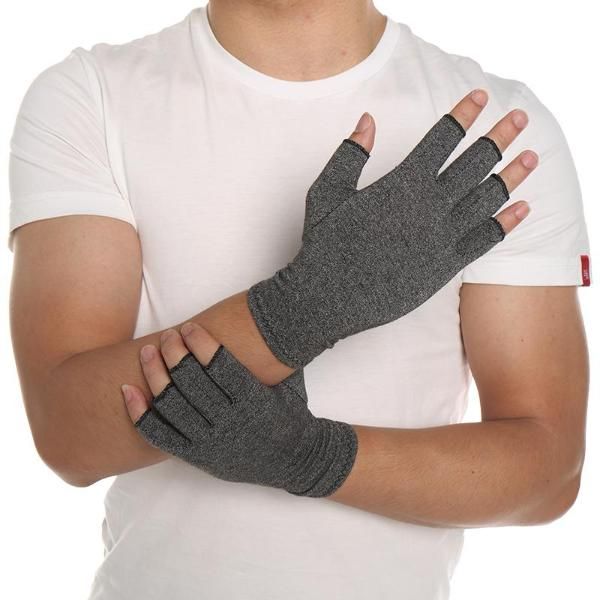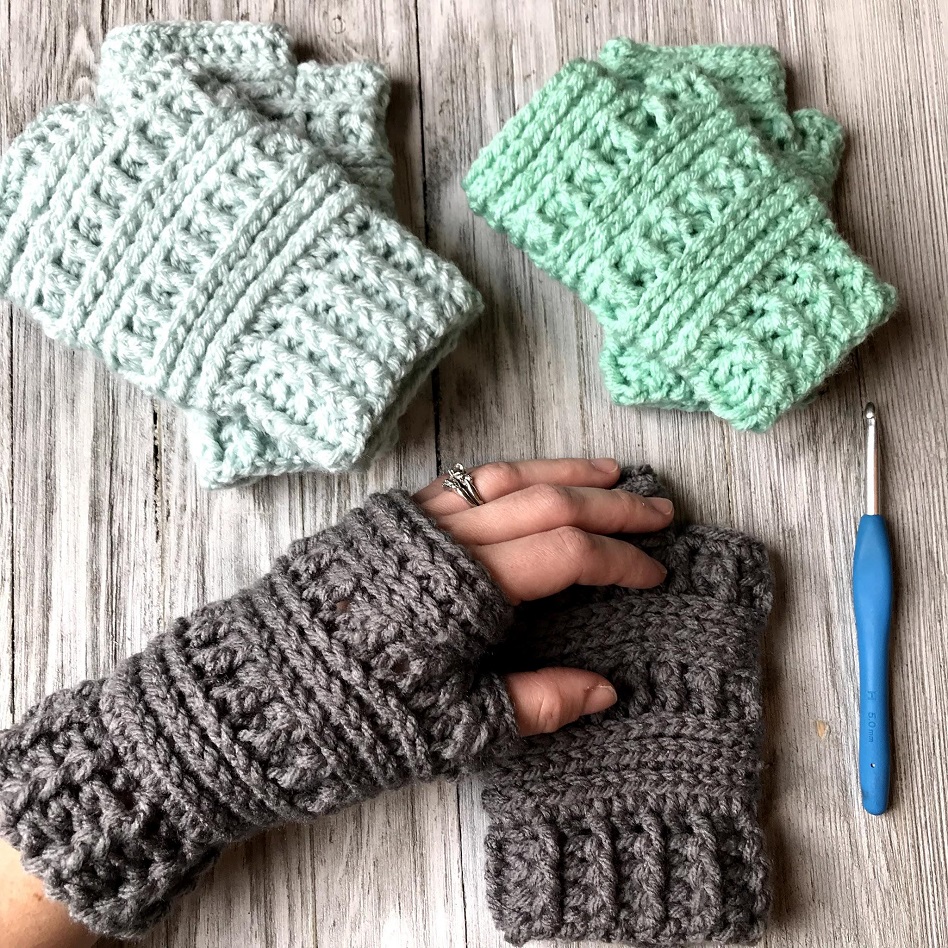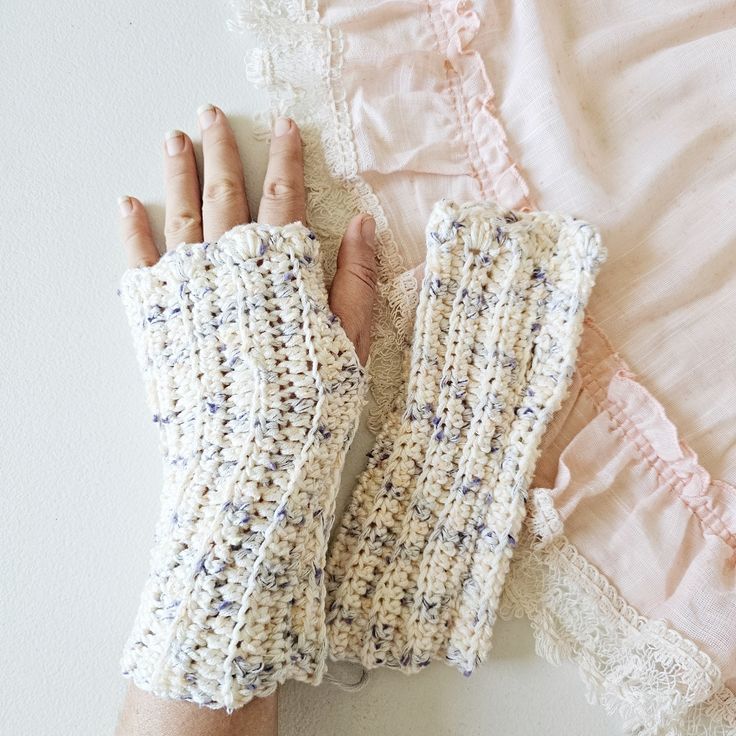Essential Materials and Tools for Knitting Fingerless Gloves
Before you start the process of how to knit fingerless gloves, it is essential to gather all the materials and tools you will need. This preparation ensures a smooth knitting experience. Below is a list of the items that are fundamental to your knitting project:
- Yarn: The choice of yarn can vary based on personal preference, the desired thickness, and warmth. Wool or acrylic blends are popular options for fingerless gloves.
- Knitting Needles: Depending on the yarn you choose, select the appropriate size of needles. Most fingerless glove patterns recommend using circular or double-pointed needles for ease of knitting in the round.
- Stitch Markers: These are vital in keeping track of the beginning of rounds or specific pattern instructions.
- Scissors: A pair of sharp scissors is necessary for cutting yarn when you finish a color change or at the end of your project.
- Tapestry Needle: For weaving in loose ends upon completion, a tapestry needle is a useful tool.
- Measuring Tape: To ensure that your gloves fit perfectly, use a measuring tape to check the dimensions as you knit.
Getting these tools ready will help you execute the following steps on how to knit fingerless gloves more effectively. Make sure each tool is conveniently within reach before you begin. With the right preparation, the actual knitting will be a more enjoyable and hassle-free experience.

Selecting the Right Yarn and Needles
Choosing suitable yarn and needles is key in learning how to knit fingerless gloves. This choice affects the texture, warmth, and look of your finished gloves. Here’s how to select the right materials.
- Yarn Weight: Match the yarn weight with your knitting needles size. Lighter weight yarns require smaller needles, while heavier yarns need larger ones.
- Yarn Material: Wool yarns offer warmth and elasticity. Synthetic yarns, like acrylic, are durable and easy to care for.
- Needle Type: Use circular or double-pointed needles as recommended by your pattern.
- Needle Size: The right size ensures that your stitches are tight enough to keep your fingers warm, yet loose enough to slide on and off easily.
Test your yarn and needles together before you start. This helps avoid mistakes and gives a sense of the gloves’ final feel and stretch. Consider making a swatch: knit a small sample to check your gauge. It should match the pattern’s recommended stitch count per inch. With the right combination, you are set to tackle any pattern for how to knit fingerless gloves.
Understanding Fingerless Gloves Patterns
Effective knitting of fingerless gloves starts with comprehending the pattern you intend to follow. Here are key elements you should understand:
- Pattern Terminology: Most knitting patterns use standard terms. Learn these terms before starting. This will make following the instructions easier.
- Sizing Information: Patterns often come with multiple size options. Choose the right size for a snug fit. Fingerless gloves should neither be too tight nor too loose.
- Stitch Guide: Patterns will specify stitch types. The common ones are knit, purl, ribbing, and cable stitches.
- Gauge Information: This tells you how many stitches per inch you should have. It’s crucial for ensuring that the gloves fit properly. Always knit a test swatch to check the gauge.
- Shaping Instructions: These are essential for creating the thumb hole and tapering the design. They make the gloves comfortable to wear.
By understanding these pattern details, you can manage your project from start to finish. Take your time to study the pattern and make sure everything is clear before you begin knitting. This understanding is a key step on how to knit fingerless gloves successfully.

The Basics of Knitting Techniques
To knit fingerless gloves, you’ll need to master some fundamental knitting techniques. Here are the primary stitches and methods to focus on:
- The Knit Stitch: The most basic stitch. Insert the right needle from front to back into the left needle’s stitch. Wrap the yarn around, pull through, and slip the old stitch off.
- The Purl Stitch: The opposite of the knit stitch. Insert the right needle from back to front, wrap the yarn around, and pull through.
- Ribbing: A combination of knit and purl stitches. It creates an elastic edge, perfect for glove cuffs.
- Increasing: To make your gloves wider, you’ll need to increase the number of stitches. Knit into the front and back of the same stitch or use a ‘make one’ method.
- Decreasing: To narrow the gloves, decrease stitches. Knit two stitches together or purl two together.
- Knitting in the Round: Use circular or double-pointed needles. This method avoids seams and creates a continuous fabric for your gloves.
Practice these techniques until you feel confident with them. Your glove knitting will be smoother and faster as a result. With these skills, you’re equipped to handle the variety of stitches your fingerless gloves pattern may require. Understanding how to knit fingerless gloves is not just about following a pattern—it’s about building a foundation of knitting prowess to carry you through all your crafting projects.
Step-by-Step Instructions for Fingerless Gloves
Now that you have your materials, needles, and pattern ready, let’s dive into the step-by-step process of how to knit fingerless gloves. Follow these guidelines for a smooth knitting experience and a pair of gloves you’ll be proud to wear or give as a gift.
- Casting On: Begin by casting on the number of stitches your pattern recommends. This sets the base for your glove.
- Knitting the Cuff: Start with the ribbing by alternating knit and purl stitches. This ensures a snug fit around the wrist.
- Body of the Glove: After the cuff, continue knitting according to your pattern. Typically, this will involve stockinette or textured stitches.
- Shaping the Thumb Hole: When you reach the thumb section, follow the shaping instructions closely. This may involve increasing or binding off stitches.
- Finishing the Body: Once the thumb hole is complete, continue to knit the upper part of the glove. Keep the same tension and stitch pattern as before.
- Binding Off: To finish the glove, bind off your stitches. Do this loosely enough to allow for easy slipping on and off.
- Making the Second Glove: Repeat the steps to create a matching glove. Ensure that both gloves are uniform in size and shape.
Remember, every pattern may have slight variations, so it’s crucial to pay attention to the specific instructions. If you encounter terms or techniques you’re unfamiliar with, refer back to the basics or consult online resources. With patience and practice, your fingerless gloves will soon be a cozy reality.

Tips for Customizing Your Fingerless Gloves Design
Customizing your fingerless gloves adds a personal touch to your knitting projects. Here are some practical tips on how to make your gloves unique:
- Choose Vibrant Colors: Opt for yarns in bold colors or multi-color blends. This will make your gloves stand out.
- Integrate Patterns: Incorporate interesting knitting patterns like cables or lace into your design. This will add texture and depth.
- Adjust the Length: Decide on the length of the gloves. You can make them short to just cover the wrist or long to go up to the elbow.
- Add Embellishments: Consider adding buttons, beads, or embroidery after completing the gloves. These elements can transform the simplicity into something more stylish.
- Mix Yarn Types: Using different types of yarns can give your gloves a unique twist. Combine wool and silk or cotton for different effects.
Experimenting with these customization techniques can enhance the joy of knitting and wearing your fingerless gloves. Whether for personal use or as thoughtful gifts, customized gloves show off your creative flair.
Finishing Touches: Weaving in Ends and Blocking
Once you have completed your fingerless gloves, the final steps are crucial to ensure a clean, polished look. Here’s how to execute these finishing touches effectively:
Weaving in Ends
After binding off your gloves, you’ll notice several loose yarn ends. These need securing to prevent unraveling. Using a tapestry needle, weave in these ends through the wrong side of the fabric. Follow the path of the knit for several stitches to hide the yarn end securely. Trim any excess yarn after weaving.
Blocking
Blocking is the process of shaping and setting your knitted gloves to enhance their appearance and fit. Begin by soaking your gloves in lukewarm water with a gentle wool wash. Carefully press out excess water using a towel—avoid wringing. Lay the gloves flat on a blocking mat, shaping them to the desired dimensions. Use rust-proof pins to hold them in place if necessary. Allow the gloves to air dry completely. This method helps define the stitches and gives your gloves a professional finish.
By mastering these finishing techniques, your hand-knit fingerless gloves will not only fit better but also look more exquisite and last longer.
Caring for Your Handmade Fingerless Gloves
Proper care extends the life and beauty of your fingerless gloves. Here are some important tips:
- Wash Gently: Hand wash your gloves in cold or lukewarm water. Use mild detergent. This prevents yarn from stretching or shrinking.
- Avoid Harsh Chemicals: Never use bleach or harsh detergents. These can damage the fibers and colors.
- Dry Correctly: Lay gloves flat to dry. Avoid hanging them, as this can distort their shape.
- Store Properly: Keep your gloves in a cool, dry place. Avoid direct sunlight and moisture.
- Regularly Repair: Check for loose threads or holes. Fix them promptly to prevent further damage.
Following these steps will keep your handmade fingerless gloves looking great for years.
